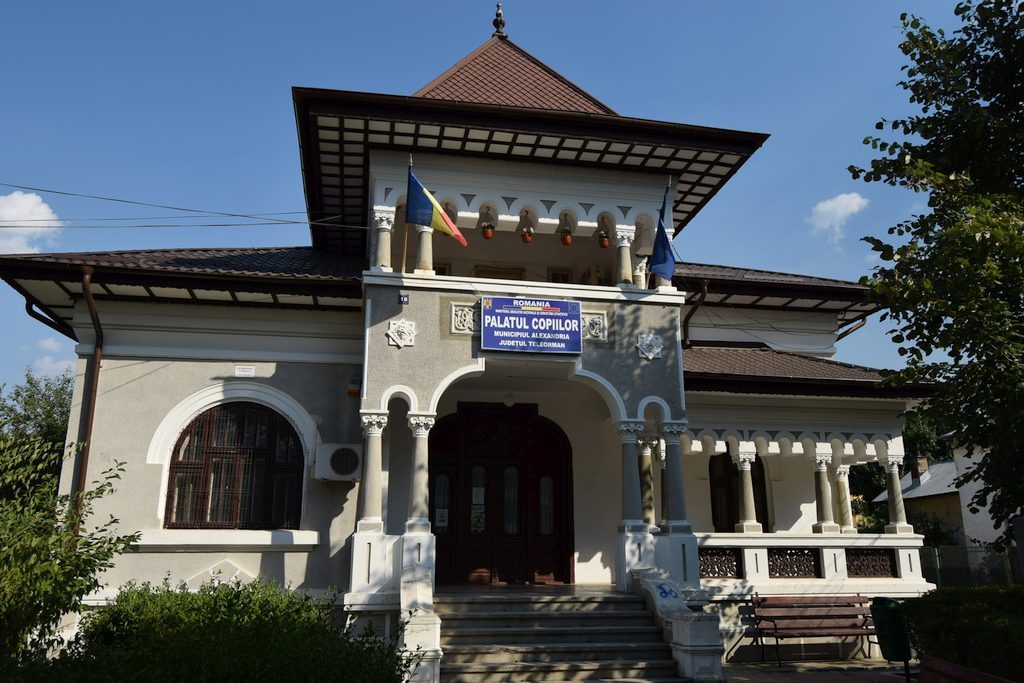

The Zarzara Memorial House from Alexandria is used in this moment as a Children’s Palace for extra-curricular actions. In the past, the house was the headquarters of a polyclinic.
The Zarzara memorial house was built in the year 1906, together with the celebration of the royal jubilee. The proof that the building up of the construction is connected with the king Carol is the embossed medallion with the portrait of King Carol, which is still kept even in the present at the entrance.
Although quite new from the historical point of view, the archeological research performed in the area in which the city is situated revealed traces of life dating back to the Paleolithic, Neolithic, the Era of the Metals and the Medieval Ages. In the proximity of the current city, in the point name “La Vii” (at 2 km towards north) there were discovered the traces of a Getae –Dacian establishment dating back to the V – VIth century b. Chr., in which there were found ceramic vessels (bowls, cups with two handles, etc.), executed by hand or by wail, bronze pieces (3 fibulas) and so on. In the point named “La Hectare” (2 km towards SE from the city) there were identified the traces of an establishment dating back to the IVth century A.D., formed from the rectangular cottages (2, 80 x 4, 50 m), in which there were found ceramic vessels from grey or tile colored paste, worked at the wheel with incised decoration lines. On the left border of the river Vedea it was discovered an old Romanian establishment dating back to the VIIIth – Xith century. Therefore, life started on this territory from the early times of history and perpetuated, developed and perfected ceaseless throughout the centuries. The idea of founding the city Alexandria has its origin in the decision of a group of inhabitants from Zimnicea and Mavrodin of founding a city free of any kind of foreign interference.
Founded in 1834, according to the urban plans drafted by the Austrian engineer Otto von Moritz (the one who executed the plans of the cities Brăila and Giurgiu and was going to execute, later on, the plan of the future city Turnu Severin), the city took the name of the prince from that period of time from Wallachia, Alexandru Dimitrie Ghica (1834 – 1842) whose relics are found deposited today in a sarcophagus monument from the premise of the Congregation Cathedral “Saint Alexander” from the municipality.
In 1837, the establishment was partially destroyed by a violent fire. Later one being redone, the establishment was declared a city in 1840 by a royal charter which is kept at the city’s History museum. The industry of the founders, of the farmers, of the handicraftsmen and of the bargainers, the geographical conditions and especially “Ekstruktia” – that interesting constitution which they formed and according to which they commanded during 30 years: – “a model of profoundly human thinking, an example of democratic leadership, through the chosen representatives of the inhabitants and an honor brought to the principle of freedom and the peaceful co-habitation of the citizens” -, all made Alexandria to evolve slightly energetic as an establishment.
After the re-foundation of the county Teleorman, in the year 1968, becoming its residence, Alexandria benefits of important investments. On the 27th of July 1979, the county Alexandria is declared a municipality, despite the fact that the city had just suffered substantial material losses because of the earthquake of the 4h of March 1977.
